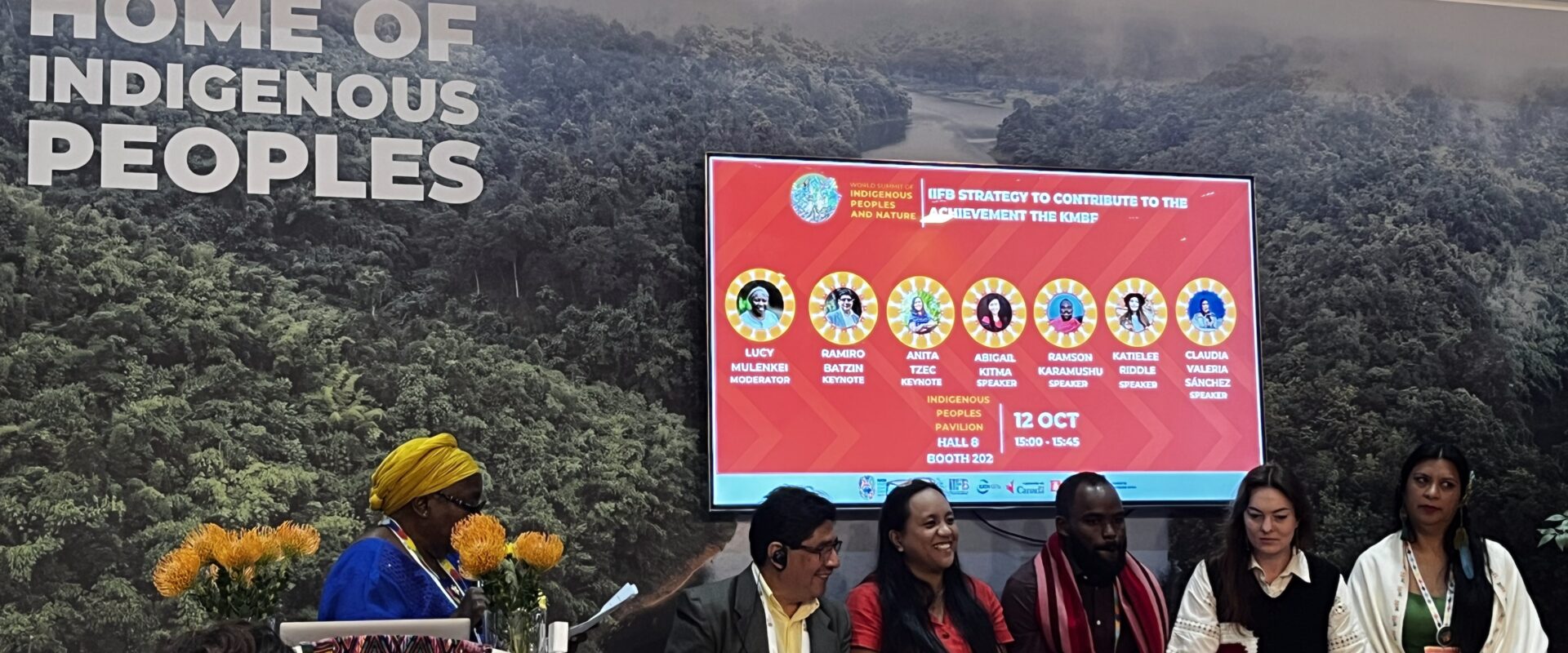There were a number of firsts at this year’s World Conservation Congress. Not only was it the first year to feature an Indigenous Peoples Pavilion – a dedicated space for exchange and visibility at the heart of the exhibition centre – but IUCN also hosted its first ever Business Summit and the inaugural (invitation-only) Philanthropy Summit.
These milestones reflect both the scale of conservation’s funding challenge (an estimated $700-850 billion gap per year) and the growing recognition of the central role of indigenous peoples and local communities in biodiversity conservation. They also point to the increasingly complex position of philanthropy in this space – one seeking to catalyse new funding models, more flexible and trust-based, yet still grappling with questions of power and accountability. Reimagining conservation finance in practical ways is essential, but how to address the inherent contradiction underlying philanthropy’s wealth-driven role in addressing systemic power imbalances?
As I was interested in better understanding this shifting landscape, and particularly the experiences of community-based organisations with funders, I joined several sessions exploring trust-based funding, resourcing transformation, and the future of conservation philanthropy. One session hosted by the Mohamed bin Zayed Species Conservation Fund focused on the “Future of Conservation Philanthropy”. Participants brainstormed a range of topics, including impact measurement, tech trends, funding gaps for biodiversity, and key funding priorities for conservation philanthropy. A recurrent challenge raised was the mismatch between the time needed to see conservation outcomes (years to decades), and the short-term project funding cycles, often too rigid to support adaptive, long-term strategies, or to see real impact.
Community based organisations expressed the need for more unrestricted and core funding, coupled with approaches that centre long-term relationships based on trust, flexibility and shared learning. One powerful example came from Northeast India, where indigenous-led teams working on rights-based biocultural conservation bring their donors together once a year for a joint sharing and planning session, replacing time-consuming reporting to multiple donors with different procedures. Getting funding directly to these groups remains difficult, despite stated intentions. Large donors expressed reluctance (lack of capacity?) to handle multiple small grants, and local organisations are often not equipped, ready, or even want to absorb big sums. Intermediary (international or national) organisations are often still required (if not always desired) – but how to turn things around, so that local organisations hold the donor relationship and select their own “intermediary” or “partner”?
IUCN Netherlands led a session which explored challenges to trust-based funding – fear of failure and mismanagement of funds. Conservation impact bonds were suggested, as a way that philanthropic organisations can take on the risk that other investors may not. In this finance model, an initial investment is made to support community-based conservation work. Once there is measurable impact, a second (more risk averse) investor “buys” the impact and replenishes the initial funds invested by the first. Another model was explained by a group from Ghana, who receive base-rate, unrestricted, biodiversity finance, coupled with a secondary level – based on impact (biodiversity outcomes) – over and above the basic financing.
Impact measurement itself is not straightforward, however, and questions of what metrics are used, who defines and monitors these, how to distinguish contribution from attribution, were subject of debate. Funders highlighted the need to balance quantitative indicators with qualitative “outcome harvesting”, without causing reporting fatigue – “We collect stories, anecdotes, do we need to be more scientific?”, one donor asked.
Participants generally agreed that co-designed and locally meaningful metrics work best, but, navigating AI’s role in grant making will be increasingly challenging, with concerns that projects using flashy new techs may suck up funds (think AI camera trapping, real-time bioacoustics recognition, and predation predictors). There was little discussion of the energy consumption, emissions and water requirements of AI systems, data sovereignty issues, or the risks of biases introduced by LLMs. Some local organisations reported finding AI to be a useful tool to relieve the burden of grant writing, in response, a donor questioned how they could truly assess whether the grant-writer had the competence expressed on paper. Perhaps truly relationship-based funding will entail moving away from the traditional funding proposal model, as human-to-human interaction becomes more important than ever.
